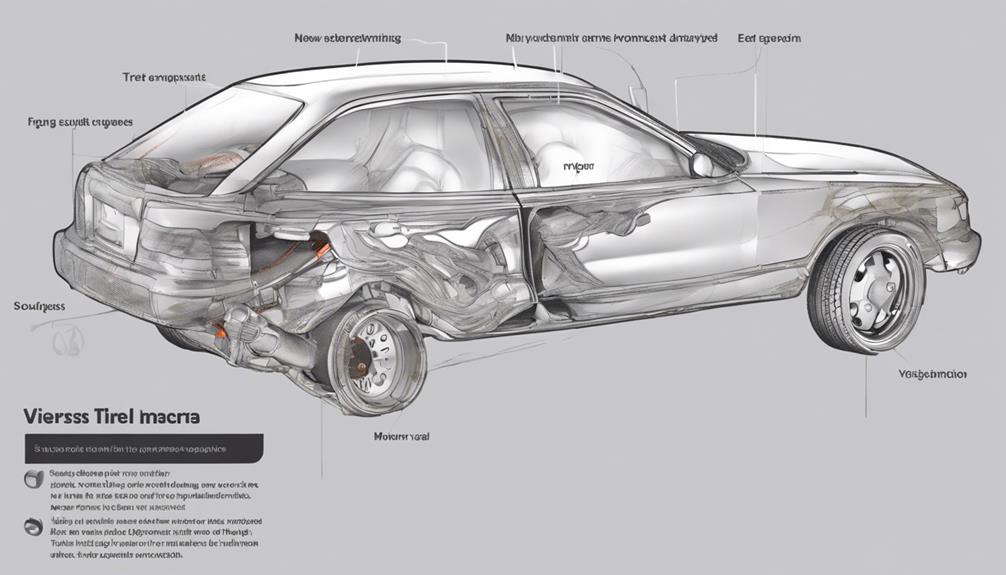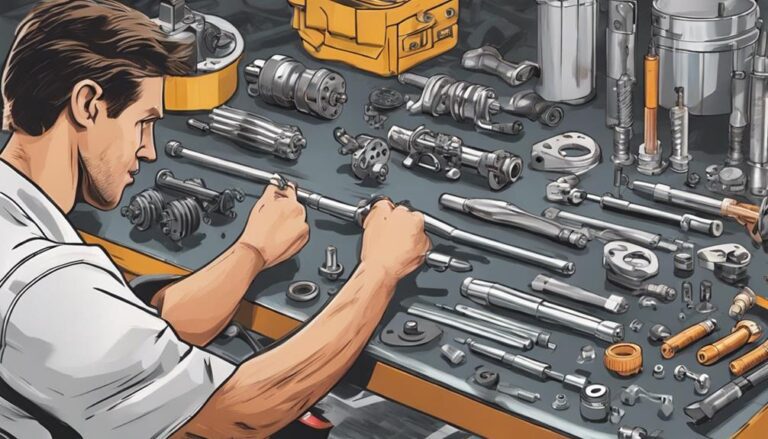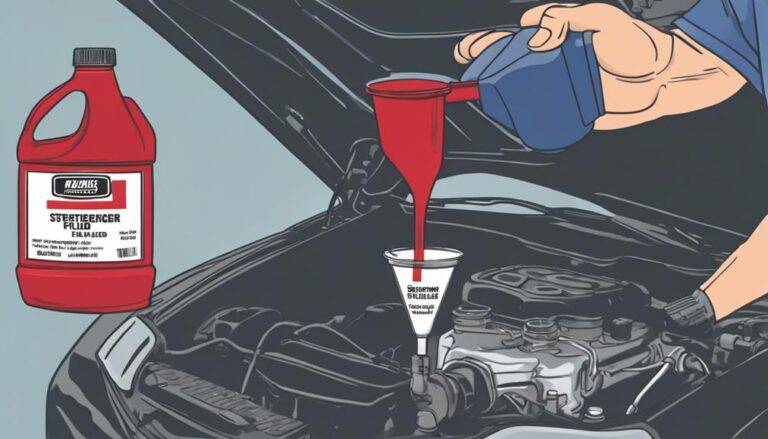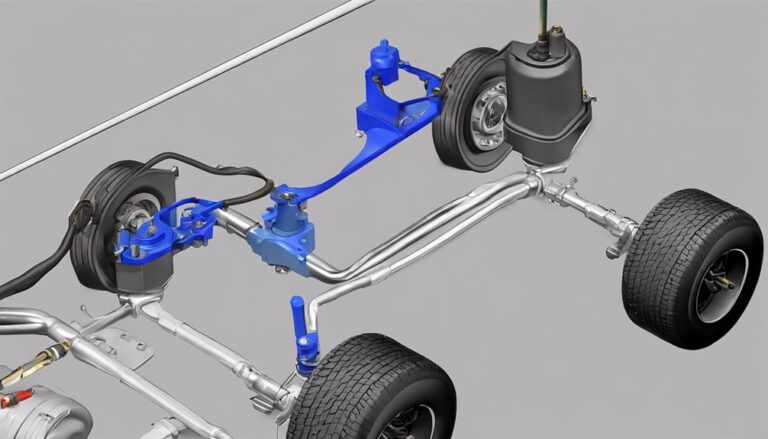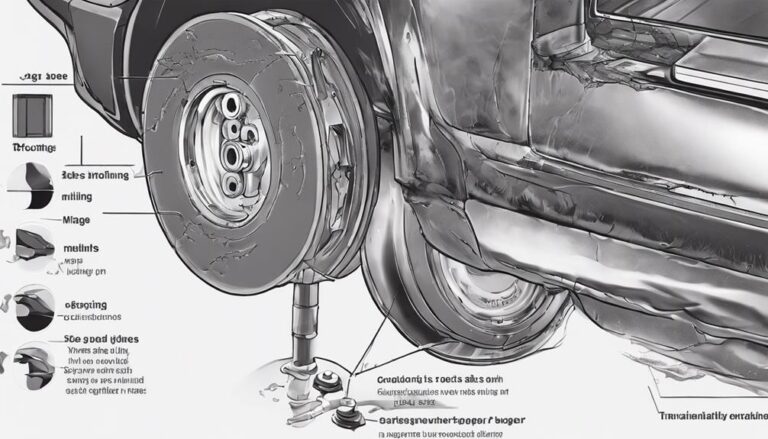10 Best Signs Your Car Needs New Control Arms
If your car's handling feels a bit off and you're noticing some unusual sensations while driving, it might be time to consider the condition of your control arms. From subtle vibrations to telltale tire wear patterns, these components play a crucial role in maintaining your vehicle's stability and safety.
Understanding the signs that indicate worn-out control arms can save you from potential hazards on the road. Keep an eye out for these indicators to ensure your car stays in top shape and your drives remain smooth and secure.
Key Takeaways
- Unusual clunking or knocking sounds signal potential control arm issues.
- Prompt action prevents further damage and ensures safe driving conditions.
- Uneven tire wear indicates the need for control arm replacement.
- Worn control arms affect handling, stability, and overall driving experience.
Unusual Clunking or Knocking Sounds
If you hear unusual clunking or knocking sounds emanating from the front end of your vehicle, it may be a sign of worn or broken control arms. These sounds are indicative of potential control arm issues, especially when driving over bumps or rough roads. Ignoring these noises can lead to further damage, jeopardizing both the safety and performance of your vehicle. When these sounds arise, prompt suspension maintenance becomes imperative to prevent costly repairs and ensure safe driving conditions.
Control arm replacement is often necessary when these clunking or knocking sounds persist. Seeking the expertise of a qualified mechanic for a thorough inspection is crucial. By addressing control arm issues promptly, you can avoid potential hazards on the road and maintain the optimal functioning of your vehicle. Remember, your safety and the efficiency of your vehicle rely on the proper maintenance of components like control arms to guarantee a smooth driving experience.
Car Drifting or Pulling to Side
Car drifting or pulling to the side signals potential control arm issues affecting your vehicle's alignment. When the control arms wear out, the alignment of your car can be thrown off, causing it to veer to one side. This misalignment can lead to consequences such as uneven tire wear patterns and reduced stability while driving. It's crucial to address these alignment issues promptly to prevent further damage and ensure the safety of your vehicle.
To correct the drift caused by worn control arms, it's essential to replace them to realign the wheels properly. Ignoring these issues can result in more severe consequences, such as loss of control or accidents due to the car pulling to one side unexpectedly. By prioritizing the correction of drift through control arm replacement, you can maintain proper alignment and drive safely. Remember, swift action in addressing alignment problems can prevent dangerous situations on the road.
Uneven Tire Wear Patterns
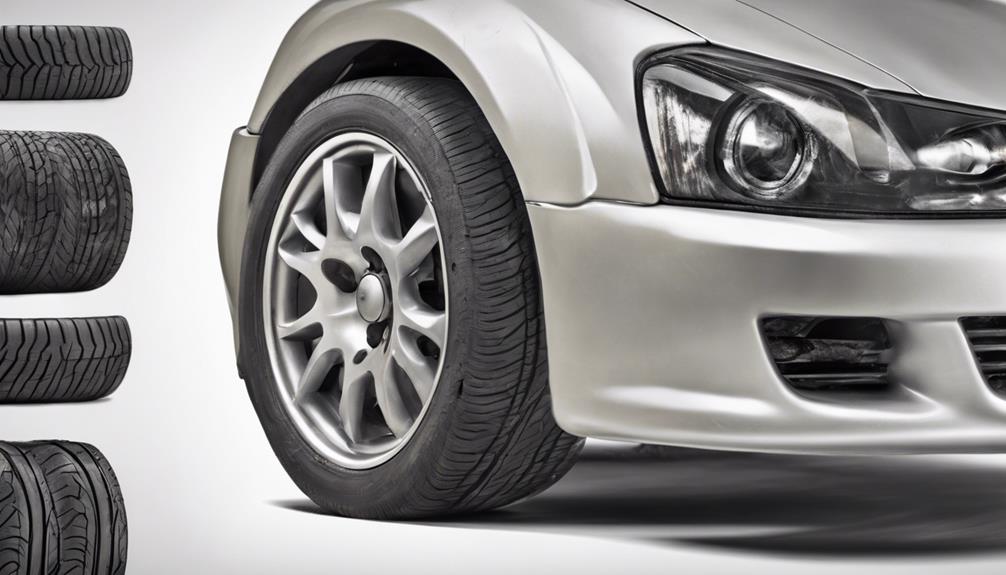
Excessive wear on specific areas of your tires may signify the need for new control arms. When you notice uneven tire wear patterns, especially on the inside or outside edges of the tires, it could be a red flag indicating issues with your control arms.
Here are some key points to consider regarding tire maintenance tips and the suspension system overview:
- Regularly check your tire tread depth to catch any irregular wear patterns early on.
- Misalignment caused by worn or damaged control arms can lead to visible uneven tire wear.
- Addressing control arm problems promptly is crucial to prevent further damage to your tires and maintain safe driving conditions.
Experiencing Steering Wheel Vibrations
If you're feeling your steering wheel shake while driving, it could be a sign of worn or damaged control arms. These vibrations are often a result of compromised stability caused by faulty control arms. Increased vibrations over bumps or rough terrain may indicate the need for control arm replacement.
These issues can affect your ability to steer and control your vehicle safely. It's important to have your control arms inspected and replaced if necessary by a qualified mechanic to ensure your safety on the road.
Steering Wheel Shakes
When experiencing steering wheel vibrations, it's crucial to consider the possibility of worn control arms as a potential cause. These vibrations can be indicative of underlying issues affecting the control arms, impacting the stability and handling of your vehicle.
To address this concern effectively, you should:
- Check Wheel Alignment: Ensure the wheels are properly aligned to prevent unnecessary stress on the control arms.
- Inspect Suspension Components: Look for signs of wear or damage in the suspension system that may be contributing to the vibrations.
- Evaluate Control Arm Bushings: Examine the condition of the control arm bushings for deterioration, as this can lead to steering wheel shakes.
Addressing these factors promptly can help restore a smoother and more comfortable driving experience.
Uneven Tire Wear
Uneven tire wear indicating steering wheel vibrations may signal underlying control arm issues requiring attention to maintain optimal vehicle performance. When experiencing these symptoms, it is crucial to address the problem promptly to prevent further damage. Misaligned tires, often caused by worn control arms, can lead to uneven tire wear patterns, affecting both handling and safety. Regular monitoring of tire wear can help in early detection of control arm issues, allowing for timely intervention. Ignoring these signs can result in extensive damage to the suspension system, affecting the overall driving experience. Ensure proper tire alignment and suspension maintenance to prevent control arm-related issues and maintain your vehicle's performance.
| Signs of Control Arm Issues Due to Uneven Tire Wear | ||
|---|---|---|
| Excessive wear on tire edges | Steering wheel vibrations | Misaligned tires |
Handling Feels Loose
Experiencing vibrations in your steering wheel can be a clear indication of worn control arms affecting your vehicle's handling stability. When your handling feels loose, it's essential to consider the following:
- Steering Responsiveness: Worn control arms can compromise your vehicle's steering responsiveness, making it feel less precise and potentially unsafe.
- Control Arm Maintenance: Regular maintenance checks on your control arms can help prevent issues such as vibrations in the steering wheel and ensure optimal performance.
- Replacement Evaluation: If you notice persistent vibrations or loose handling, it's advisable to inspect the control arms promptly to determine if replacement is necessary.
Visible Control Arm Damage
Inspecting your vehicle's control arms for visible damage is crucial to ensuring optimal performance and safety on the road. When conducting DIY control arm inspection, pay close attention to any signs of cracks, bends, or rust on the A-shaped component. These visible damages can indicate potential issues that may compromise your vehicle's handling and overall safety. As part of control arm maintenance tips, it's recommended to look for visible signs of wear or deformation when the vehicle is lifted for maintenance purposes.
Addressing visible control arm damage promptly is vital as it can prevent further complications and help maintain optimal vehicle performance. If you notice any visible damage during your inspection, it's advisable to consult with a professional mechanic to evaluate the extent of the damage and determine if replacement is necessary. By staying proactive in identifying and addressing visible control arm damage, you can ensure a safer and smoother driving experience.
Difficulty Steering or Handling
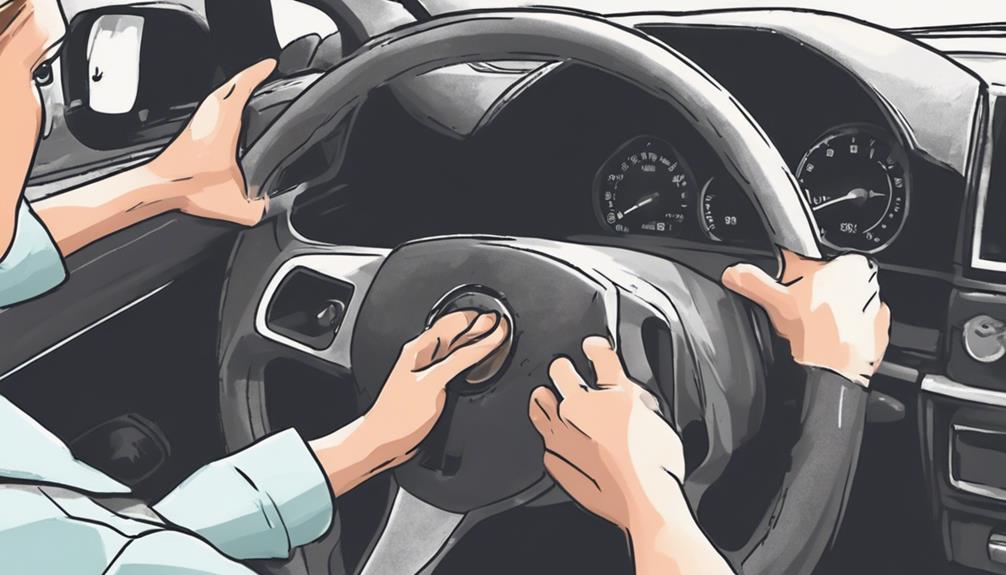
If you're noticing difficulty in steering or handling your vehicle, it could be a sign of worn control arms affecting your driving experience. Control arms play a crucial role in the proper functioning of your car's steering and handling systems. Here are some key points to consider:
- Steering Responsiveness: Worn control arms can lead to decreased steering responsiveness, causing delays in the vehicle's reaction to your steering inputs.
- Handling Precision: Faulty control arms can compromise the precision of your vehicle's handling, making it challenging to navigate corners or maintain stability on the road.
- Tire Wear: Uneven tire wear is often a result of issues with control arms, which can further exacerbate steering and handling problems.
Don't overlook these signs of deteriorating control arms as they can't only impact your driving comfort but also pose safety risks. Addressing control arm issues promptly is crucial to maintaining optimal steering and handling performance.
Squeaking or Squealing Noise
If you notice a high-pitched squeaking or squealing noise while driving over bumps or rough roads, it could be a sign of worn control arm components.
This noise may become more noticeable at lower speeds and could indicate deteriorating bushings or ball joints.
Addressing these sounds promptly is crucial to prevent further damage and maintain your vehicle's stability.
Noise When Turning
When turning your vehicle, listen for any squeaking or squealing noises that could indicate worn-out control arm bushings or ball joints. If you hear these sounds, it's crucial to address the issue promptly to avoid further damage.
Here are some key points to consider:
- Check for increased noise levels at low speeds or when making sharp turns.
- Ignoring these noises can compromise your vehicle's handling and safety.
- Prompt inspection and potential control arm replacement are essential for maintaining optimal suspension performance and preventing costly repairs.
Maintaining your suspension system through regular checks and addressing any unusual noises can ensure a smooth and safe driving experience.
Noise Over Bumps
When encountering a squeaking or squealing noise over bumps in your vehicle, promptly inspecting for worn-out control arm bushings or ball joints is crucial. These noises often signal issues like lack of lubrication, wear and tear, or damage to the control arm components.
Ignoring these sounds can lead to further damage and potential safety hazards while driving. To address this problem, consider regular control arm maintenance to identify and fix issues early on. By addressing the noise promptly, you can prevent more extensive and costly repairs in the future.
If the control arm bushings or ball joints are indeed worn-out, exploring control arm replacement options may be necessary to ensure the proper functioning and safety of your vehicle.
Noise While Braking
Inspect for worn control arm bushings or ball joints when you hear a squeaking or squealing noise while braking in your vehicle. This noise can stem from lack of lubrication or metal-to-metal contact in the control arm components.
To address this issue effectively, consider:
- Checking Brake Pad Wear: Ensure your brake pads are in good condition and replace them if necessary.
- Performing Lubrication Maintenance: Regularly lubricate the control arm bushings and ball joints to prevent noise and wear.
- Seeking Professional Inspection: If the noise persists, have a mechanic inspect the control arms for any damage or excessive play.
Prompt attention to these factors can help maintain your vehicle's braking performance and safety.
Feeling Bumps or Jolts More Intensely
Are you noticing a heightened sensation of bumps or jolts while driving your vehicle? The increased intensity of these road disturbances could be signaling potential issues with your control arms. Control arms are vital components responsible for absorbing shocks from road imperfections.
If you're experiencing a rougher ride than usual, it's a clear indication that your control arms may be worn out and not effectively dampening the road disturbances. When bumps impact your vehicle's suspension more significantly, it's time to inspect and possibly replace the control arms.
Feeling more vibrations and disturbances from road irregularities suggests that your control arms are no longer functioning optimally. To address this, consider checking the maintenance of your control arms and look into control arm replacement tips. Maintaining these components is crucial for a smoother and safer driving experience.
Increased Tire Noise While Driving

If you notice a sudden increase in tire noise while driving, it could be a sign of worn-out control arm bushings causing misalignment. This issue can lead to various problems related to your vehicle's suspension and handling. When facing increased tire noise, keep an eye out for the following signs that may indicate control arm issues affecting your tire alignment:
- Tire alignment issues: Misaligned tires due to worn-out control arm bushings can cause increased tire noise as the tires scrub against the road surface.
- Suspension problems: Control arm components that are deteriorating can result in excessive vibrations and noise, especially when driving over bumps.
- Uneven tire wear patterns: If you notice uneven tire wear, particularly on the inner or outer edges of the tires, it could be a clear indication of control arm problems affecting alignment.
Being attentive to changes in road noise and tire wear is crucial to identifying control arm issues early on and ensuring your safety on the road.
Car Feels Unstable or Wobbly
If your car feels unstable or wobbly, it may be due to worn control arms impacting your suspension system.
This sensation can manifest as a shaky steering wheel and uneven tire wear, indicating potential control arm failure.
Addressing this issue promptly is crucial to maintain stable and predictable handling while driving.
Steering Wheel Shakes
Experiencing a shaky steering wheel while driving often indicates worn control arms, leading to a feeling of instability in your car. This issue can significantly impact your driving experience and overall safety on the road. Addressing this problem promptly is crucial to avoid further complications.
Here are some key points to consider:
- Handling Affected: Control arm problems can make your car feel wobbly or loose on the road, affecting your ability to steer effectively.
- Uncomfortable Driving: Vibrations in the steering wheel due to bad control arms can lead to a discomforting driving experience.
- Safety Concerns: A shaky steering wheel may signal the need for new control arms to restore stability and ensure safe driving conditions.
Addressing control arm maintenance promptly is essential to maintain proper steering wheel alignment and overall vehicle stability.
Uneven Tire Wear
Uneven tire wear, particularly on the inside or outside edges, serves as a clear indicator of potential control arm issues affecting the stability and handling of your vehicle. When control arms are worn or damaged, they can cause misalignment of the wheels, leading to uneven tire wear patterns. This uneven wear can make your car feel unstable or wobbly, especially at higher speeds, impacting your driving experience.
Faulty control arms can also result in decreased traction, affecting braking performance and overall vehicle control. Regularly monitoring tire wear and ensuring proper tire pressure and wheel alignment can help detect control arm problems early on, preventing further suspension system damage. If you notice significant uneven tire wear, it's crucial to have your control arms inspected by a professional to ensure your safety on the road.
Frequently Asked Questions
How Do I Know if My Control Arm Needs Replacing?
If your control arm needs replacing, listen for clunking noises, check for uneven tread wear, feel for increased vibrations, look for visual damage when jacked up, and pay attention to noise over hills. Replacement cost varies.
When Should I Replace My Control Arms?
If your car shows control arm symptoms like clunking noises, vibrations, or uneven tire wear, it's time for maintenance. Replace control arms promptly to ensure safe driving. Keep an eye on warning signs for a smooth ride.
What Happens When a Control Arm Goes Bad?
When a control arm goes bad, common symptoms include clunking noises, uneven tire wear, and steering issues. Warning signs like pulling to one side and shaking chassis indicate potential loss of control. Addressing these issues promptly is crucial for safety.
What Do Bad Control Arms Sound Like?
Signs of bad control arms include clunking over bumps, metal-on-metal sounds, thuds near the wheel, and squeaks or pops during driving. Listen for these noises, especially when turning or going over bumps. Get a professional diagnosis for peace of mind.
Conclusion
If you notice any of the 10 signs mentioned, it's time to consider replacing your control arms. Ignoring these warnings can lead to dangerous consequences such as loss of vehicle control or uneven tire wear.
In fact, studies have shown that control arm issues are responsible for approximately 10% of accidents caused by vehicle malfunctions.
Don't take any risks when it comes to your safety on the road – address control arm issues promptly.

